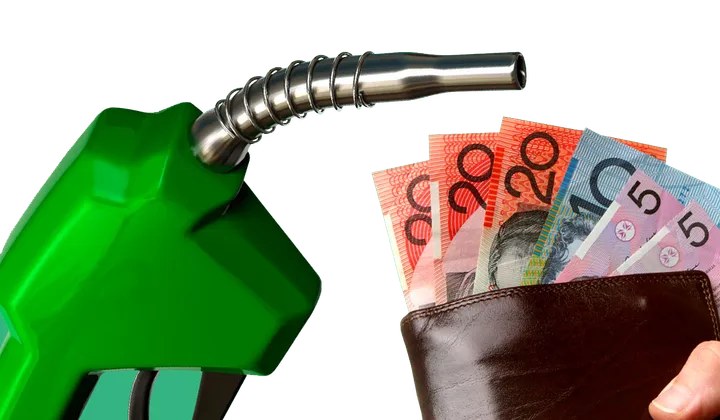Understanding Fuel Excise

fuel-excise for Australian Fleet Operators and Business Owners
Introduction to Fuel Excise
Fuel excise in Australia is a significant consideration for fleet operators and business owners. As a flat sales tax levied by the Australian Government on petrol and diesel, the current rate stands at 49.6 cents for every litre of fuel purchased. This tax plays a crucial role in the nation’s economy and directly impacts the operational costs of businesses relying on transportation.
How Fuel Excise Works
Fuel excise is adjusted bi-annually, in February and August, to align with inflation, adding a layer of complexity to financial planning for businesses. This tax is in addition to the Goods and Services Tax (GST), further influencing the total cost of fuel. Understanding these adjustments is vital for effective budgeting and financial forecasting in the transportation sector.
The Role of Fuel Excise in Government Funding
Fuel excise is a major revenue stream for the Australian Government, with projections indicating that Australian motorists will contribute over $15.7 billion in net fuel excise this financial year. For fleet operators and business owners, recognizing the broader economic implications of these contributions is essential for informed advocacy and dialogue with policymakers.
Fuel Excise and Infrastructure Development
While fuel excise contributes to the government’s general revenue, a portion is earmarked for transport infrastructure development. This investment is critical for improving road conditions and transport efficiency, directly benefiting businesses that rely on road transport. However, the allocation of these funds and the transparency of their use remain areas of interest for business stakeholders.
Impact for Fleet Operators and Business Owners
For fleet operators and business owners, the impact of fuel excise extends beyond direct financial costs. It influences the cost of goods and services, affecting overall business competitiveness and consumer prices. Understanding this broader impact is crucial for strategic planning and pricing strategies.
Maximizing Your Entitlements
In the 2020-21 financial year, the Australian Government collected a staggering $18.8 billion in gross excise from manufacturers or importers on petrol and diesel. This figure underscores the significant contribution of fuel excise to the national budget, highlighting the importance of fuel taxation in Australia’s fiscal landscape. However, a closer look at the distribution and utilization of these funds reveals a compelling opportunity for businesses.
The Breakdown of Fuel Tax Credits (FTC)
Of the total fuel taxed at the ‘terminal gate’, nearly half (49%) received a Fuel Tax Credit (FTC) for part or all of the excise collected. This is broken down as follows:
- 17% of petrol and diesel was used on road and qualified for a partial FTC of 16.7 cents per litre (CPL).
- 32% of petrol and diesel was used off public roads for creditable purposes and qualified for a full FTC averaging 42.5 CPL.
In total, FTCs for petrol and diesel amounted to an expense to the budget of $7.3 billion. This substantial figure represents a significant return to businesses, offsetting a portion of their operational costs related to fuel consumption.
Are You Maximizing Your Entitlements?
With such a significant amount of money in play, it’s crucial for businesses to ensure they are maximizing their entitlements under the FTC scheme. The data reveals that a considerable portion of fuel consumption qualifies for either partial or full tax credits, offering a tangible financial benefit to eligible businesses.
The Future of Fuel Excise
The landscape of fuel excise is evolving, with increasing fuel efficiency and the rise of electric vehicles (EVs) reshaping revenue forecasts. For businesses, adapting to these changes means exploring more fuel-efficient vehicles or integrating EVs into their fleets. Staying ahead of these trends is essential for long-term sustainability and cost management.
FAQs on Fuel Excise
Q: How can fleet operators manage the impact of fuel excise on their operations?
A: Fleet operators can mitigate the impact through strategic fuel management, investing in fuel-efficient vehicles, and exploring alternative fuel options.
Q: Are there rebates available for businesses regarding fuel excise?
A: Yes, certain industries and uses, such as agriculture and mining, may qualify for rebates or tax credits. It’s important to consult with a tax professional to understand eligibility.
Q: How does fuel excise affect the adoption of electric vehicles in fleets?
A: The shift towards EVs is partly motivated by the desire to reduce fuel costs and environmental impact. However, the current structure of fuel excise does not apply to electric vehicles, presenting an opportunity for cost savings and sustainability.
How to Ensure You’re Getting Everything You’re Entitled To
Understand Eligibility: Familiarize yourself with the eligibility criteria for FTCs. Determine whether your business’s fuel usage for machinery, equipment, heavy vehicles, and light vehicles off public roads qualifies for credits.
Stay Informed on Rates: Keep up to date with the latest FTC rates, which are subject to change. Ensure you’re applying the correct rates when calculating your credits.
Record Keeping: Maintain accurate records of fuel purchases and usage. Detailed records will support your claims and help you maximize your entitlements.
Utilize ATO Resources: The Australian Taxation Office (ATO) offers tools and calculators to assist businesses in determining their eligible claims. Make use of these resources to simplify the process.
Seek Professional Advice: Consider consulting with a tax professional or advisor who specializes in FTCs. Their expertise can help navigate the complexities of the scheme and ensure you’re claiming the maximum amount possible.

Conclusion
Fuel excise represents a significant consideration for Australian fleet operators and business owners. By understanding its mechanisms, impacts, and the evolving landscape, businesses can better navigate the challenges and opportunities it presents. Staying informed and proactive in fuel management and fleet composition strategies will be key to maintaining competitiveness and sustainability in the face of changing fuel excise dynamics.